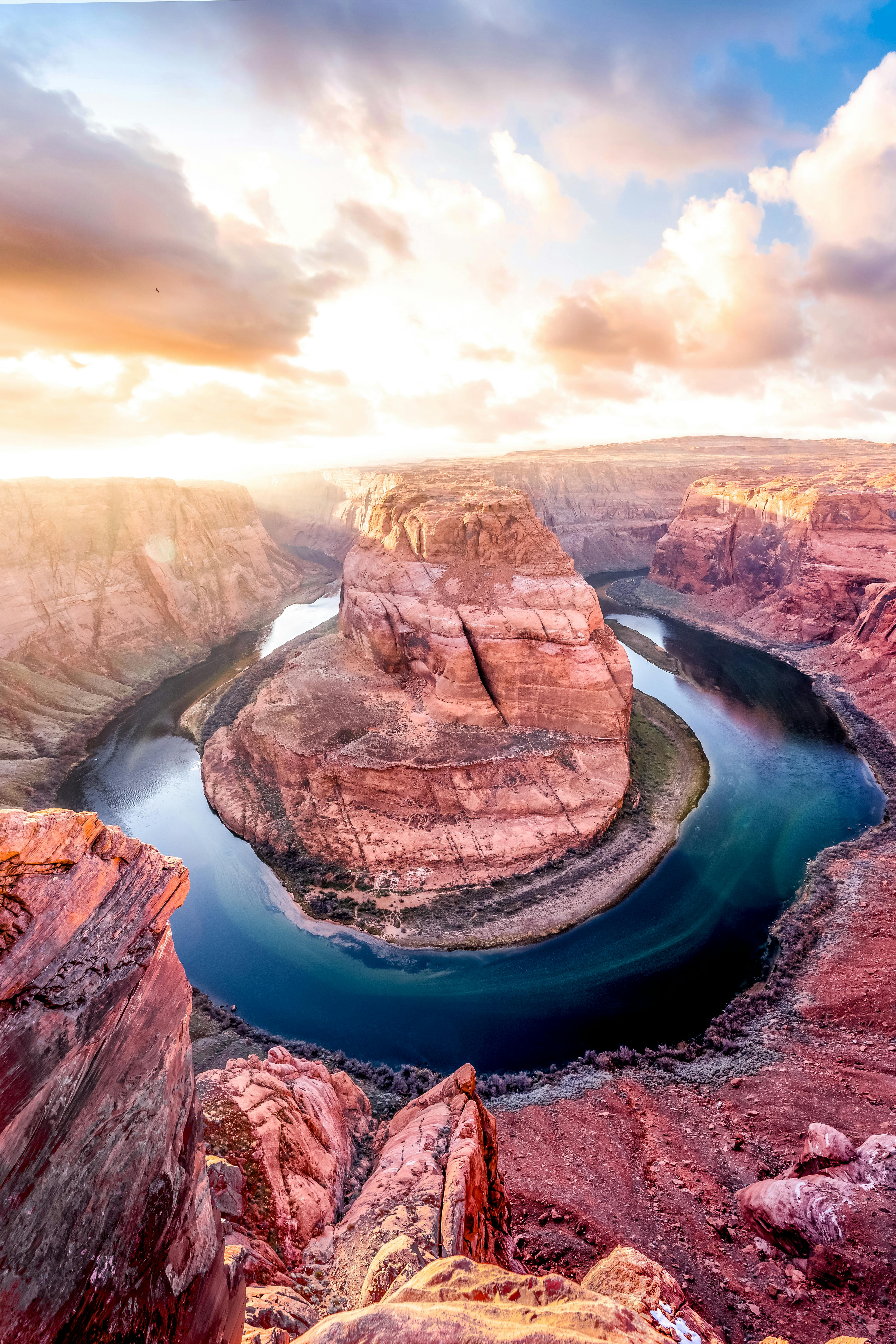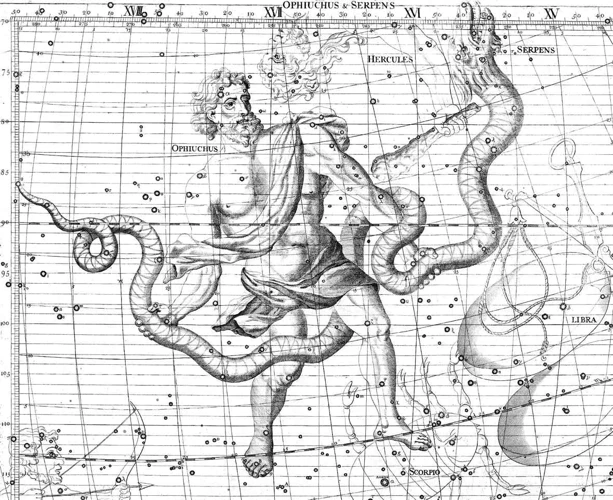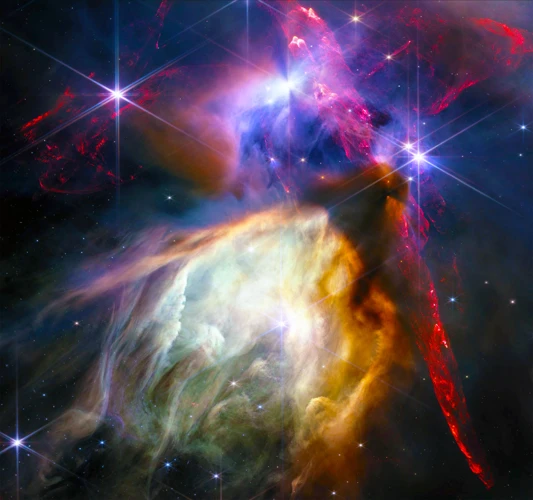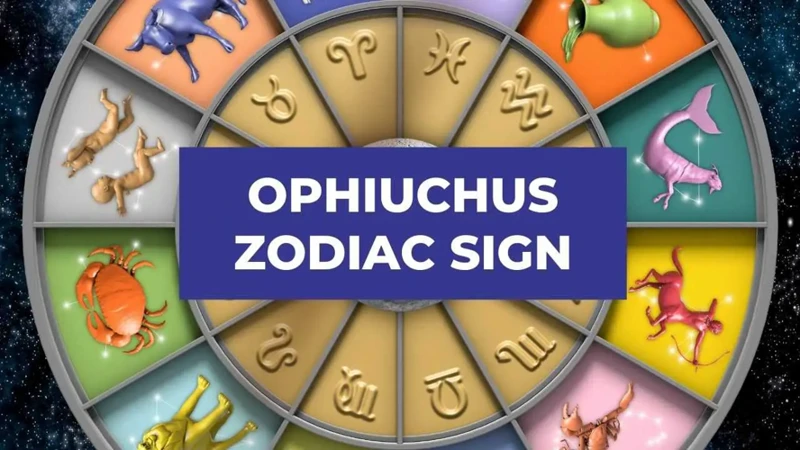
Welcome to the intriguing world of Chinese mythology, a realm of fantastical tales and celestial beings that have captivated the imaginations of countless generations. From the ancient creation myths that explain the origins of the universe, to the ethereal gods and goddesses who shape the heavens and earth, Chinese mythology is a treasure trove of captivating stories and rich symbolism. Join us on a mesmerizing journey as we explore the mythical origins of Chinese mythology, delving into the creation myths and uncovering the intriguing legends of the celestial gods. Discover the fascinating legends that have shaped the beliefs and culture of the Chinese people for centuries, and unlock the secrets of a mythical realm steeped in wonder and mystery.
Contents
- The Creation Myths
- The Celestial Gods
- Conclusion
-
Frequently Asked Questions
- What are the main creation myths in Chinese mythology?
- Who is Pangu in Chinese mythology?
- What is the significance of Yin and Yang in Chinese mythology?
- Who are Nüwa and Fuxi in Chinese mythology?
- What role did Gonggong and Zhu Rong play in Chinese mythology?
- Who is the Jade Emperor in Chinese mythology?
- Who are the Eight Immortals in Chinese mythology?
- What is the significance of the Eight Immortals in Chinese culture?
- Are the creation myths and celestial gods in Chinese mythology still worshiped today?
- How has Chinese mythology influenced other cultures?
- References
-
Frequently Asked Questions
- 1. How did Chinese mythology begin?
- 2. What are the main creation myths in Chinese mythology?
- 3. Who is Pangu?
- 4. What is the myth of Nüwa and Fuxi?
- 5. Who are Gonggong and Zhu Rong?
- 6. Who is the Jade Emperor?
- 7. What are the Eight Immortals?
- 8. Are Chinese creation myths found in other cultures?
- 9. How are Chinese mythology and religion connected?
- 10. Why is Chinese mythology important today?
- References
- Read More
The Creation Myths

In the vast realm of Chinese mythology, the creation myths stand as the foundation of the entire celestial tapestry. These captivating tales, brimming with symbolism and mystique, offer intriguing explanations for the origin of the universe and all that inhabits it. One of the most renowned creation myths is that of Pangu, a colossal being who emerged from the chaos of the primordial egg and separated Yin and Yang, the opposing forces that govern the universe. Another captivating myth features Nüwa and Fuxi, a brother and sister who brought balance to the world by creating humanity and establishing the concepts of marriage and family. Additionally, the myth of Gonggong and Zhu Rong tells the tale of two clashings deities whose battle caused catastrophic floods and led to the formation of mountains and rivers. These captivating creation myths not only offer insight into the origins of the world, but also reflect the values and beliefs of ancient Chinese civilization, providing a glimpse into their profound understanding of the cosmos and their place within it.
The Myth of Pangu
The Myth of Pangu is a captivating tale that occupies a significant place in Chinese mythology. According to this ancient legend, in the beginning, there was nothing but chaos. Within this chaos, a cosmic egg came into existence, and from within the egg, Pangu, a colossal giant, emerged. Pangu grew at an astonishing pace, expanding and growing taller each day. For a staggering 18,000 years, Pangu tirelessly separated Yin and Yang, the fundamental opposing forces of the universe. With a mighty swing of his axe, Pangu cleaved the chaos, creating the heavens above and the earth below. As he continued to grow, his body eventually became the elements of the world. His breath transformed into the wind and clouds, his voice became the thunder and rain, his eyes turned into the sun and the moon, his limbs became the four directions, and his flesh formed the fertile soil and the mountains. Pangu’s creation and sacrifice bestowed order and harmony upon the world, shaping it into a habitable place for humanity to thrive. In essence, the myth of Pangu symbolizes the process of creation and the cycle of life, emphasizing the vital importance of balance and harmony in the cosmos. This awe-inspiring legend is a testament to the power of perseverance, transformation, and the profound connection between the divine and the earthly realm in Chinese mythology.
The Myth of Nüwa and Fuxi
The Myth of Nüwa and Fuxi portrays a pivotal moment in Chinese mythology, where the world takes shape under the guidance of these divine siblings. According to the ancient legends, Nüwa and Fuxi were not only husband and wife but also half-human and half-snake beings, symbolizing the connection between humanity and the natural world. As the creators of humanity, they molded figures out of clay, imbuing them with life and individuality. Nüwa, known as the goddess of creation, possessed the power to repair the heavens and mend the cracks in the earth. When a catastrophic battle between two powerful deities caused havoc and destruction, Nüwa stepped in to bring balance and restore order. She used different colored stones to patch the damaged sky and cut off the legs of a giant turtle to strengthen the foundation of the earth. Nüwa and Fuxi also introduced the institution of marriage and are believed to be the ancestors of all human beings. Their union symbolized the harmony between yin and yang, and the importance of balance in the world. Through this captivating myth, the Chinese people found explanations for the origins of humanity, the natural world, and the significance of unity and harmony in the cosmic order.
The Myth of Gonggong and Zhu Rong
The Myth of Gonggong and Zhu Rong portrays a clash between two powerful deities that had profound consequences for the world. Gonggong, a water god with the form of a nine-headed monster and the tail of a serpent, and Zhu Rong, a fire god clad in red armor, engaged in a fierce battle for supremacy. Their clash was so intense that it caused catastrophic floods, threatening to submerge the earth. In their struggle, Gonggong, driven by anger and frustration, damaged one of the pillars that held up the sky. As a result, the heavenly bodies shifted, causing chaos and disorder in the cosmos. The dramatic impact of this battle is believed to have shaped the landscape of China, with mountains formed and rivers redirected. It is said that the scars left by Gonggong’s rampage can still be seen today. Ultimately, it was the mighty god, Zhurong, who emerged victorious and quelled the chaos, establishing balance and harmony once again.
Throughout Chinese mythology, the tales of Gonggong and Zhu Rong serve as a reminder of the eternal struggle between opposing forces and the delicate balance that must be maintained for harmony to prevail. They also symbolize the profound connection between the natural elements of fire and water, which are both essential for life. This myth offers insight into ancient Chinese beliefs about the power of nature and the constant battle between destructive and constructive forces. It serves as a reminder of the delicate equilibrium that must be upheld for the world to thrive.
For more information on the fascinating realm of Chinese mythology, you can explore the intriguing story of the recently discovered Ophiuchus zodiac sign, which has had a significant impact on the interpretations of astrological charts. Discover how this newfound celestial influence can potentially affect career success and even the compatibility between Ophiuchus and Pisces here.
The Celestial Gods

The celestial realm of Chinese mythology is inhabited by a pantheon of powerful and revered gods and goddesses who govern the forces of nature and maintain order in the universe. At the pinnacle of this divine hierarchy stands the awe-inspiring figure of the Jade Emperor. Regarded as the supreme ruler, the Jade Emperor oversees all celestial affairs and ensures harmony and justice prevail. While the Jade Emperor holds the highest authority, an enchanting group of Eight Immortals also holds great significance in Chinese mythology. These legendary beings possess extraordinary powers and are revered for their wisdom and benevolence. Each Immortal has their unique characteristics and serves as an embodiment of virtuous qualities such as longevity, generosity, and spiritual enlightenment. Together, the Jade Emperor and the Eight Immortals form an integral part of the celestial pantheon, showcasing the deep spiritual beliefs and reverence for higher beings in Chinese culture.
The Jade Emperor
The Jade Emperor, also known as Yu Huang Shangdi, is one of the most revered and prominent figures in Chinese mythology. This celestial deity holds a position of supreme power and authority, ruling over the heavens and earth with wisdom and benevolence. In Chinese cosmology, the Jade Emperor is believed to reside in the majestic Jade Palace, surrounded by an entourage of divine beings and heavenly officials.
According to ancient myths, the Jade Emperor ascended to his lofty position by virtue of his virtue and intelligence. It is said that he was once a mortal named Xuanyuan, who proved himself through acts of great kindness and just governance. Impressed by his virtuous deeds, the gods elevated him to the position of the Emperor of Heaven.
As the ruler of the heavens, the Jade Emperor is responsible for maintaining cosmic order and harmony. He presides over the celestial bureaucracy, which consists of numerous heavenly officials and ministers. Each deity has a specific role and duty within the heavenly hierarchy, ensuring that the universe functions in a harmonious and balanced manner.
The Jade Emperor is often depicted as a wise and majestic figure, adorned in royal garments and a crown. He holds a jade tablet, symbolizing his divine authority, and is often portrayed sitting on a magnificent throne. His visage exudes a sense of serenity and wisdom, reflecting the profound understanding he possesses.
In Chinese culture, the Jade Emperor is widely venerated and worshipped. Temples dedicated to his honor can be found throughout China and other parts of the world where Chinese communities reside. He is particularly revered during the annual celebration of Chinese New Year, as it is believed that he makes decisions regarding fortune and destiny for the coming year.
The legend of the Jade Emperor permeates various aspects of Chinese folklore, art, and literature, solidifying his status as a central figure in Chinese mythology. His benevolent rule and role as the ultimate arbiter of destiny serve as a source of inspiration and hope for people seeking divine guidance and protection. The influence of the Jade Emperor extends beyond mythology, shaping the cultural and spiritual practices of the Chinese people to this day.
The Eight Immortals
The Eight Immortals are a group of legendary figures from Chinese mythology who possess extraordinary powers and are revered as symbols of longevity and good fortune. They are often depicted as a diverse group, each with their own unique attributes and personalities. Among the most well-known members of the Eight Immortals are Lü Dongbin, a scholar who is often depicted carrying a sword and riding a donkey, and Zhang Guolao, an old man who can travel through time by riding a donkey backwards. Another prominent immortal is Zhongli Quan, who is known for his prowess in alchemy and his ability to revive the dead. Each of the Eight Immortals embodies different virtues and represents different aspects of Chinese culture. For example, Lan Caihe is often portrayed as a transgender figure, symbolizing the fluidity of gender identity. The legends surrounding the Eight Immortals are filled with magical encounters, extraordinary feats, and valuable life lessons. They continue to be an integral part of Chinese folklore and are frequently depicted in art, literature, and religious ceremonies. To this day, the Eight Immortals remain beloved symbols of everlasting life and transcendence in Chinese culture.
Conclusion

The captivating realm of Chinese mythology is a window into a world steeped in wonder, symbolism, and ancient wisdom. The fascinating creation myths that form the foundation of this mythology reveal the Chinese people’s profound understanding of the origins of the universe and their place within it. From the mythical figure of Pangu who brought harmony by separating Yin and Yang, to the divine siblings Nüwa and Fuxi who bestowed humanity with the gift of love and family, and the tumultuous clash between Gonggong and Zhu Rong that gave birth to the natural wonders of mountains and rivers, these tales weave a rich tapestry of imagination and insight. Through these myths, we gain a deeper appreciation for the Chinese culture’s reverence for balance, harmony, and the interconnectedness of all things. The celestial gods, such as the revered Jade Emperor and the legendary Eight Immortals, further exemplify the complex hierarchy and symbolism of Chinese mythology. As we conclude our exploration of the mythical origins of Chinese mythology, we are left in awe of the profound wisdom, creativity, and boundless imagination that have shaped this captivating tradition. Delving into the depths of these myths allows us to appreciate the richness and diversity of human beliefs and reminds us of the enduring power of storytelling. As we venture back to our own realm, let us carry with us the enchantment and wisdom of Chinese mythology, forever fascinated by the celestial deities and the awe-inspiring tales that have stood the test of time.
Frequently Asked Questions

What are the main creation myths in Chinese mythology?
Some of the main creation myths in Chinese mythology include the myth of Pangu, Nüwa and Fuxi, and Gonggong and Zhu Rong. These myths offer fascinating explanations for the origins of the universe and the creation of humanity.
Who is Pangu in Chinese mythology?
Pangu is a legendary figure in Chinese mythology who is believed to have emerged from a primordial egg. Pangu is said to have separated Yin and Yang, creating the earth and the heavens, and he is often depicted as a giant figure who shaped the world with his body.
What is the significance of Yin and Yang in Chinese mythology?
Yin and Yang are fundamental concepts in Chinese mythology and philosophy. Representing opposing forces such as light and dark, male and female, and heaven and earth, Yin and Yang symbolize the harmony and balance that exist in the universe.
Who are Nüwa and Fuxi in Chinese mythology?
Nüwa and Fuxi are sibling deities in Chinese mythology who are credited with the creation of humanity. Nüwa is often depicted as a half-human, half-snake goddess, while Fuxi is portrayed as a human with a serpent’s tail.
What role did Gonggong and Zhu Rong play in Chinese mythology?
Gonggong and Zhu Rong are two powerful deities in Chinese mythology whose clash caused catastrophic floods. Gonggong, a water deity, is associated with chaos and destruction, while Zhu Rong, a fire deity, is known as a hero who tried to prevent the floods and restore order.
Who is the Jade Emperor in Chinese mythology?
The Jade Emperor, also known as Yu Huang, is one of the most important deities in Chinese mythology. He is the ruler of heaven and has the power to grant immortality and control the fate of humans.
Who are the Eight Immortals in Chinese mythology?
The Eight Immortals are legendary figures in Chinese mythology known for their mastery of Taoist arts and their immortality. Each immortal has unique powers and characteristics, and they are often depicted as wise and benevolent beings who help humans overcome challenges.
What is the significance of the Eight Immortals in Chinese culture?
The Eight Immortals hold great cultural significance in China and are seen as symbols of good fortune, longevity, and happiness. They are revered for their wisdom, and their stories have inspired art, literature, and even martial arts forms.
Are the creation myths and celestial gods in Chinese mythology still worshiped today?
Yes, the creation myths and celestial gods are still part of Chinese culture and religious beliefs today. Many people in China continue to worship and make offerings to these deities, seeking their blessings and protection.
How has Chinese mythology influenced other cultures?
Chinese mythology has had a profound influence on various cultures around the world. Its rich symbolism, captivating stories, and spiritual teachings have inspired art, literature, and even popular culture in many countries, fostering a deeper appreciation for the intricacies of Chinese mythology.
References
- China’s Creation and Origin Myths
- Chinese creation myths
- Chinese Creation Myths: Most Up-to-Date Encyclopedia, …
Frequently Asked Questions

1. How did Chinese mythology begin?
Chinese mythology has its roots in ancient oral traditions and folklore that date back thousands of years. These stories were passed down through generations, shaping the beliefs and cultural identity of the Chinese people.
2. What are the main creation myths in Chinese mythology?
Chinese mythology features several creation myths, including the myths of Pangu, Nüwa and Fuxi, and Gonggong and Zhu Rong. These myths explain the origins of the universe, human beings, and natural phenomena.
3. Who is Pangu?
Pangu is a mythological figure in Chinese mythology who is believed to have created the universe. According to the myth, Pangu emerged from chaos and used his body to form the heavens and the earth. His breath became the wind, his voice turned into thunder, and his body transformed into the mountains and rivers.
4. What is the myth of Nüwa and Fuxi?
The myth of Nüwa and Fuxi tells the story of how humans were created. Nüwa is a goddess who repaired the vault of heaven and molded human beings out of clay. Fuxi, her brother and husband, taught humanity important skills such as fishing, hunting, and agriculture.
5. Who are Gonggong and Zhu Rong?
Gonggong and Zhu Rong are two powerful gods in Chinese mythology associated with natural disasters and fire respectively. Gonggong, a water god, caused chaos by smashing into Mount Buzhou, leading to floods and the tilting of the Earth. Zhu Rong, the god of fire, saved the world by stopping the floods and restoring order.
6. Who is the Jade Emperor?
The Jade Emperor is a celestial god in Chinese mythology who rules over heaven and earth. He is considered the highest deity and is associated with moral values, justice, and the governance of the cosmos. The Jade Emperor is often depicted as an elderly man wearing robes and holding a jade tablet.
7. What are the Eight Immortals?
The Eight Immortals are a group of legendary beings in Chinese mythology who are believed to have attained immortality. Each immortal possesses unique powers and abilities. These immortals are often depicted in folklore, art, and literature, symbolizing longevity, good fortune, and wisdom.
8. Are Chinese creation myths found in other cultures?
While there may be similarities with creation myths in other cultures, Chinese creation myths have unique elements that reflect the beliefs and values of Chinese society. These myths play a significant role in shaping Chinese culture, traditions, and religious practices.
9. How are Chinese mythology and religion connected?
Chinese mythology and religion are deeply intertwined. Many Chinese myths are tied to religious practices, and deities from mythology are worshipped in temples and rituals. Chinese religion often incorporates elements of Taoism, Buddhism, and Confucianism, blending mythological tales with philosophical teachings.
10. Why is Chinese mythology important today?
Chinese mythology continues to be relevant in contemporary Chinese culture. Its stories and symbols are celebrated during festivals, reflected in art and literature, and provide insight into the Chinese worldview. By understanding Chinese mythology, we gain a deeper appreciation of China’s rich cultural heritage.






